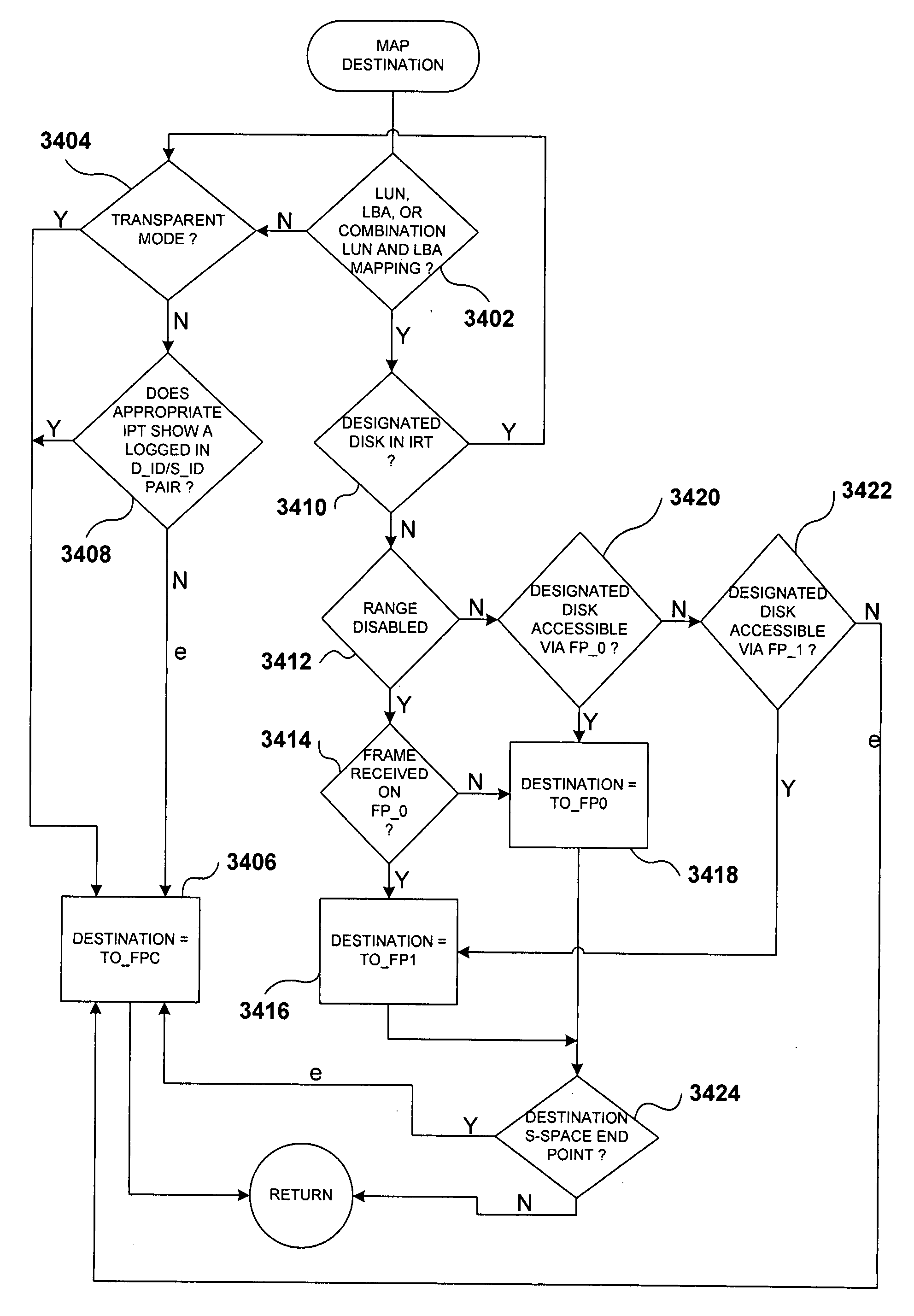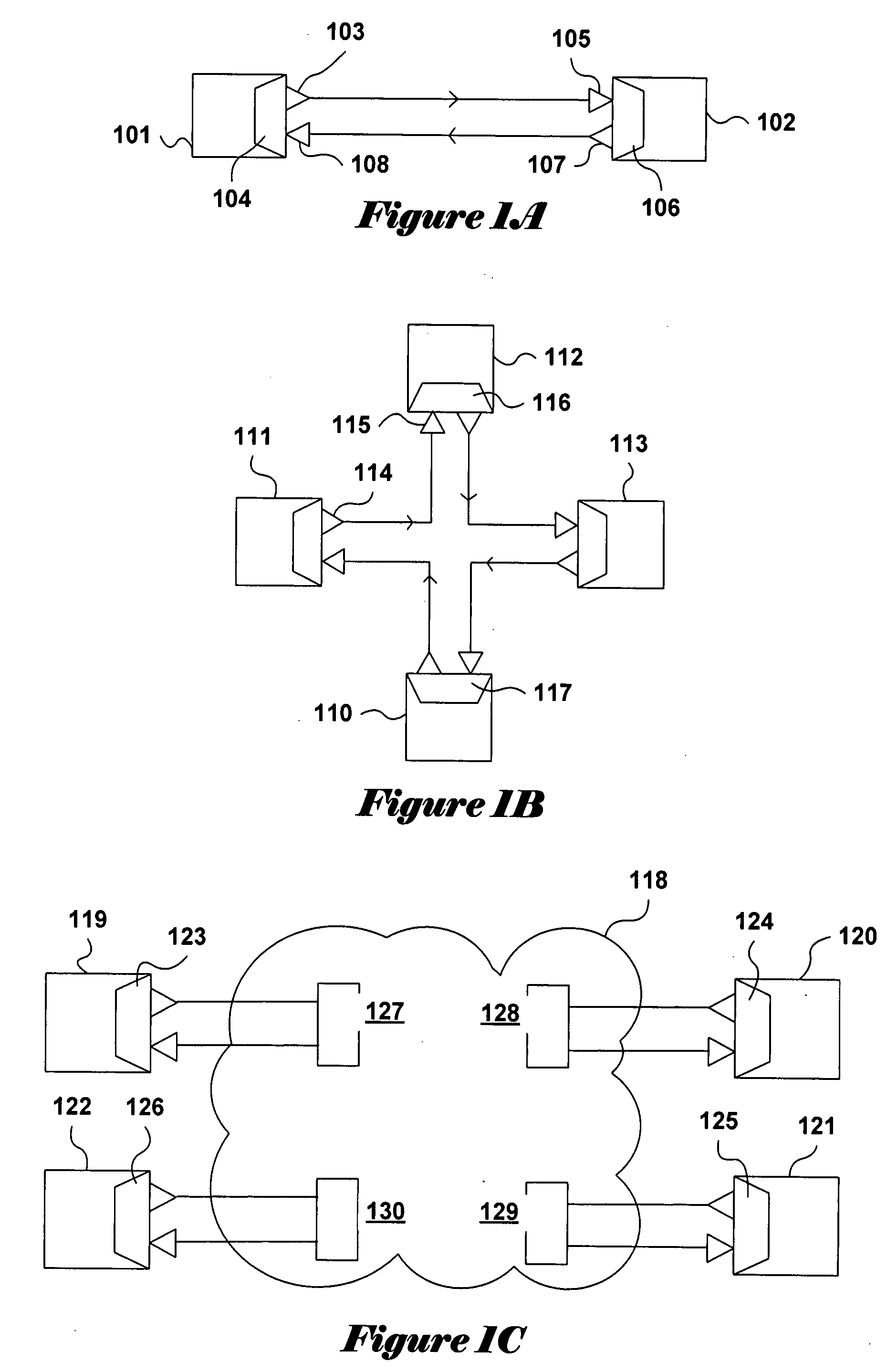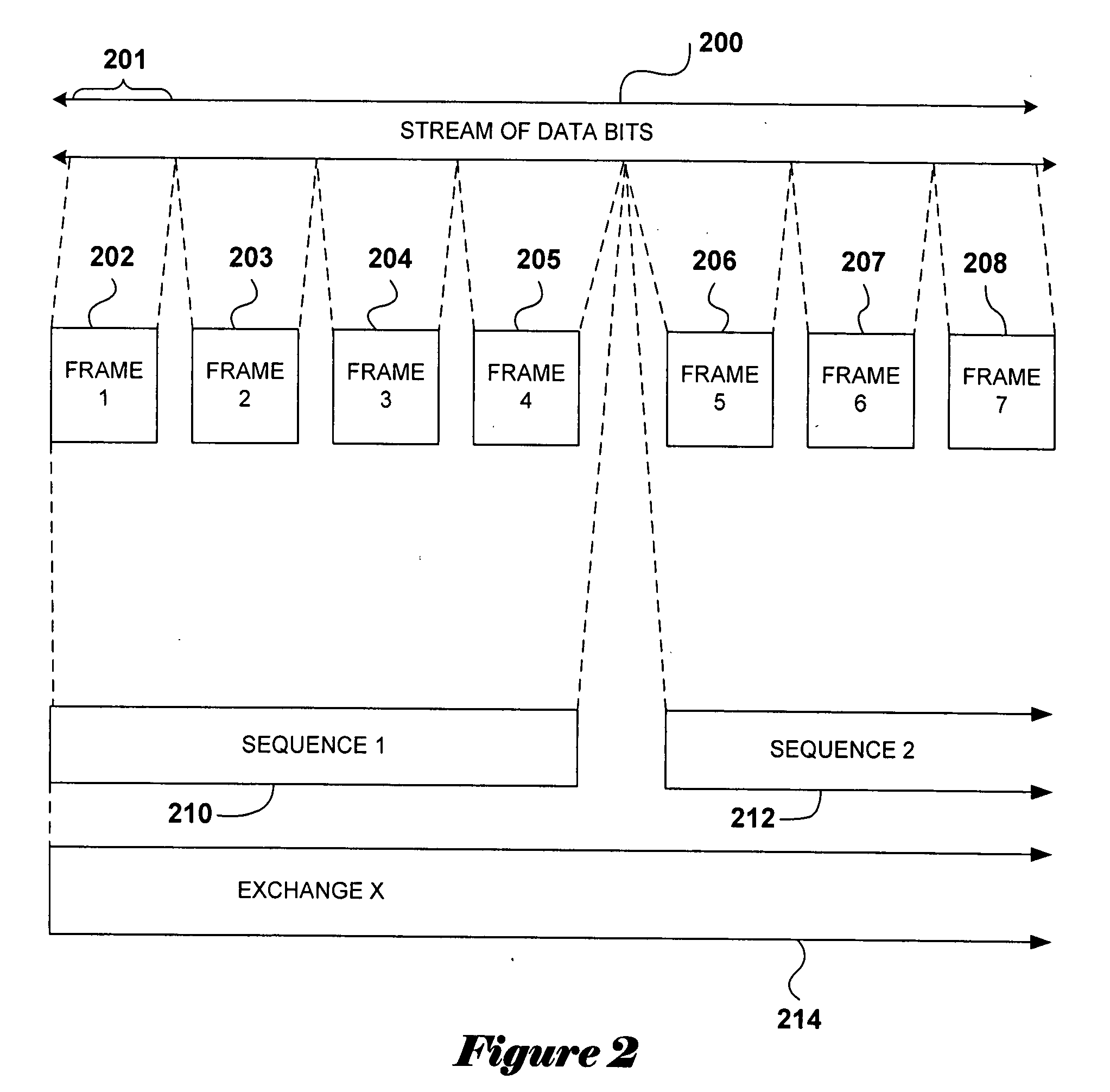Allocation-unit-based virtual formatting methods and devices employing allocation-unit-based virtual formatting methods
a technology of allocation unit and formatting method, which is applied in the direction of memory address/allocation/relocation, instruments, data switching networks, etc., can solve the problems of increasing the physical length of the scsi bus, accompanied by increasing bandwidth, etc., and achieves the effect of increasing the number of fc controllers, increasing the number of available storage space, and increasing the number of individual fc disks
- Summary
- Abstract
- Description
- Claims
- Application Information
AI Technical Summary
Benefits of technology
Problems solved by technology
Method used
Image
Examples
Embodiment Construction
message 684 to the initiator. At this point, the I / O operation has been completed. The target device then drops the BSY signal line so that the SCSI bus returns to the BUS FREE state 686. The SCSI-bus adapter can now finish its portion of the I / O command, free up any internal resources that were allocated in order to execute the command, and return a completion message or status back to the CPU via the PCI bus.
Mapping the SCSI Protocol onto FCP
[0038]FIGS. 7A and 7B illustrate a mapping of FCP sequences exchanged between an initiator and target and the SCSI bus phases and states described in FIGS. 6A-6C. In FIGS. 7A-7B, the target SCSI adapter is assumed to be packaged together with a FCP host adapter, so that the target SCSI adapter can communicate with the initiator via the FC and with a target SCSI device via the SCSI bus. FIG. 7A shows a mapping between FCP sequences and SCSI phases and states for a read I / O transaction. The transaction is initiated when the initiator sends a si...
PUM
 Login to View More
Login to View More Abstract
Description
Claims
Application Information
 Login to View More
Login to View More - R&D
- Intellectual Property
- Life Sciences
- Materials
- Tech Scout
- Unparalleled Data Quality
- Higher Quality Content
- 60% Fewer Hallucinations
Browse by: Latest US Patents, China's latest patents, Technical Efficacy Thesaurus, Application Domain, Technology Topic, Popular Technical Reports.
© 2025 PatSnap. All rights reserved.Legal|Privacy policy|Modern Slavery Act Transparency Statement|Sitemap|About US| Contact US: help@patsnap.com



